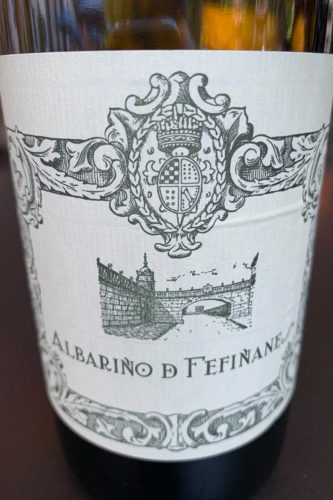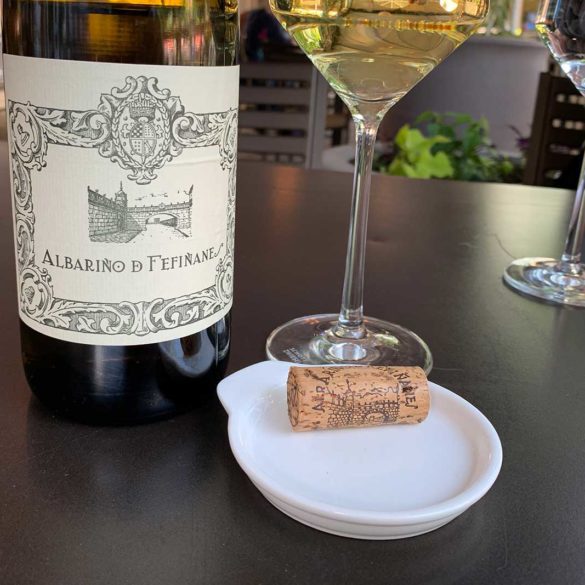After three years of almost exclusively covering Italy and France, its time I come clean on something very important: I dig Spanish wines as well. I always have. My editorial pursuits have led me to Lo Stivale and l’Hexagone because of a desire to specialize, not because their wines are superior. Also, given that both nations are No. 1 and No. 2 in terms of volume, I’ll likely never run out of stories.
But as this publication evolves into a new, more robust frame in the coming months, we will be easing back into the wines of Spain, mostly through the craft of two talented writers who know it better than I do — Ashley Hausman MW and Clay Dillow. They will each be sharing their unique insights on classic and not-so-classic wines from “Le Pied de Toro,” and we’ll also be dabbling into Austria, Slovenia and Greece.
But I can get in on the act, too. In part, because of my secret love for Albariño, the white grape the defines the northern Atlantic Coast of the Iberian Peninsula. On a recent night out with my wife, I decided to shelve my wine writer tendencies for a night and just enjoy the moment. No note-taking on some exciting bottle of Cru Beaujolais. No asking to decant our Barolo. It was warm, it was summer, and we were living out in the open once again.
After whittling the list down to three options, Hailey selected: “We’ll have the Albariño.” Of course, thirty minutes later, I cordially asked her (during a lull in the conversation, I might add): “Can I write some notes real quick?” Ever gracious, she agreed.
And here is the reason why I had to thumb out some notes on my phone: “Albariño de Fefiñanes” finally tied together the loose threads on why Albariño resonates so much for me. These white wines are deceptively complex. On the nose, they carry bright and refreshing tones akin to lemon-laced peaches, minty herbs and sea spray. But often, little else. Enticing: yes. But layered or intense or even unique? Not really.
It’s the texture of Albariño, however, that is so consistent and wickedly multifaceted: substantial yet light; broad yet energetic and precise; silky and tangy. That sea spray note from earlier — a suggestive quality of saltiness — keeps the party going like a bag of potato chips you can’t stop eating. Albariño, like the Atlantic Ocean off the Galician Coast, keeps coming in waves until the bottle is empty.
Now think of the plethora of white wine categories that fit the first aspect (aromatically fresh but not complex), yet never achieve the second (texturally layered). On hot summer days or exhausting weeknights, Albariño has got your back.
2019 Bodegas del Palacio de Fefiñanes “Albariño de Fefiñanes” Rias Biaxas
 Rias Biaxas DO (Galicia)
Rias Biaxas DO (Galicia)
Grapes: Albariño (100%)
Alcohol: 13.5%
Opinion: ★★★★ 3/4 (out of five)
Food-friendliness: Impeccable
Value: Very Good
A beginner might like … that this is delicious, no questions asked. It also has incredible versatility with food: shellfish, roast chicken, even challenging vegetables like broccolini and asparagus would play well with it. But also, the antique label, which was designed by an artist in Santiago de Compostela in 1928: a good label launches daydreams of travel, and this one might inspire a few to Galicia.
A wine obsessive might like … The textural complexity of this wine. While fermented in stainless steel, it has the fullness of a white wine that has been raised in a less hermetically sealed vessel. And the finish could not be cleaner.
Note: This wine was purchased with our editorial budget thanks to subscribers like you.






You may know them already, but I suggest you try my three favourite albariños, Leirana Viña Genoveva, Zárate el Palomar and, for a real majestic bargain, Rodrigo Méndez Cíes. They are serious wines, less fruity and more mineral, salty and austere than commercial albariños.
I need to revisit a couple of these. Thanks for the reminder!